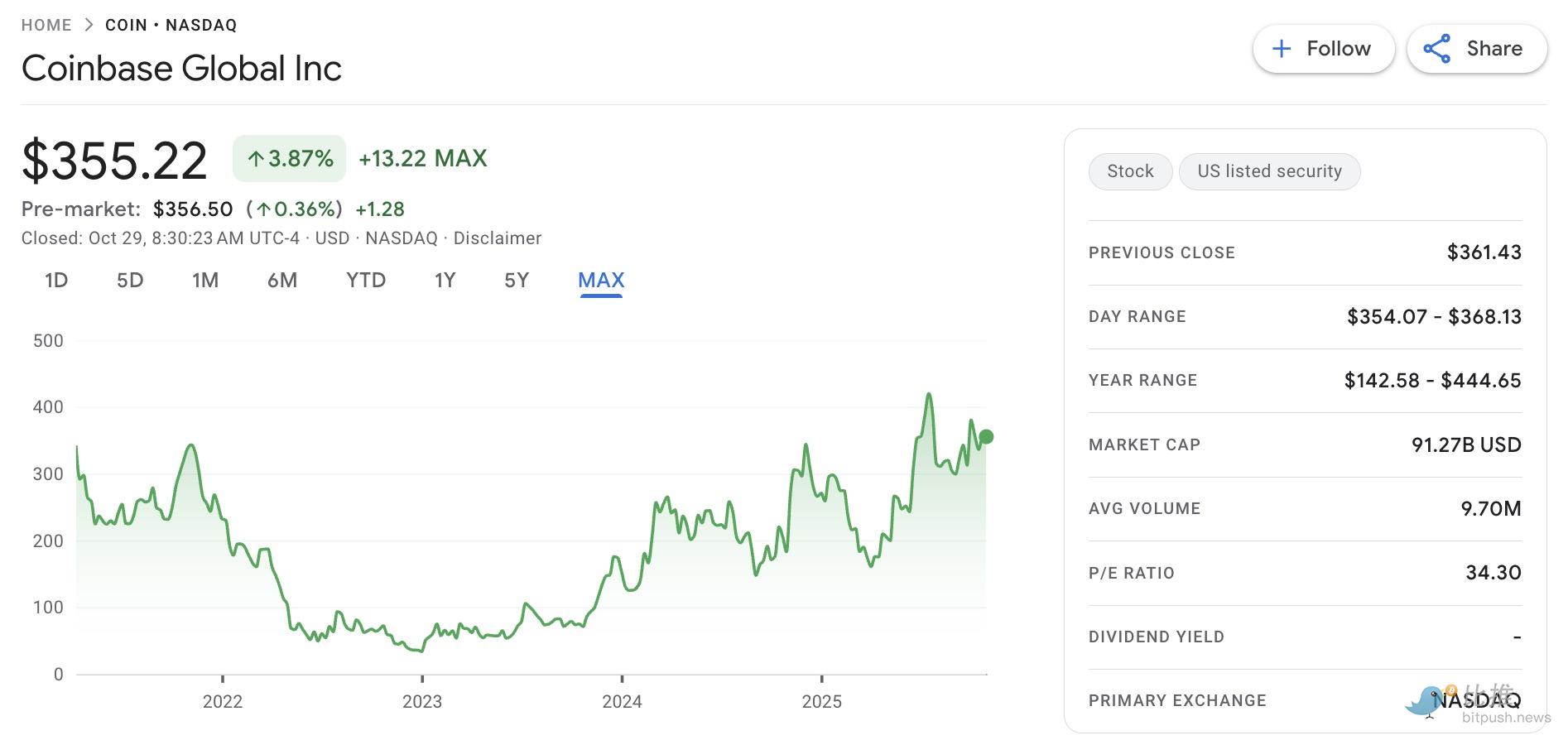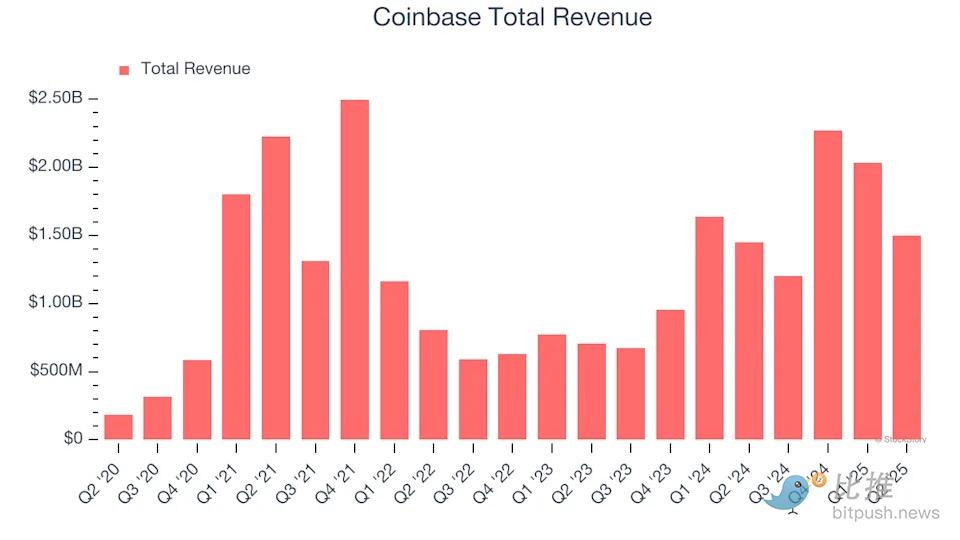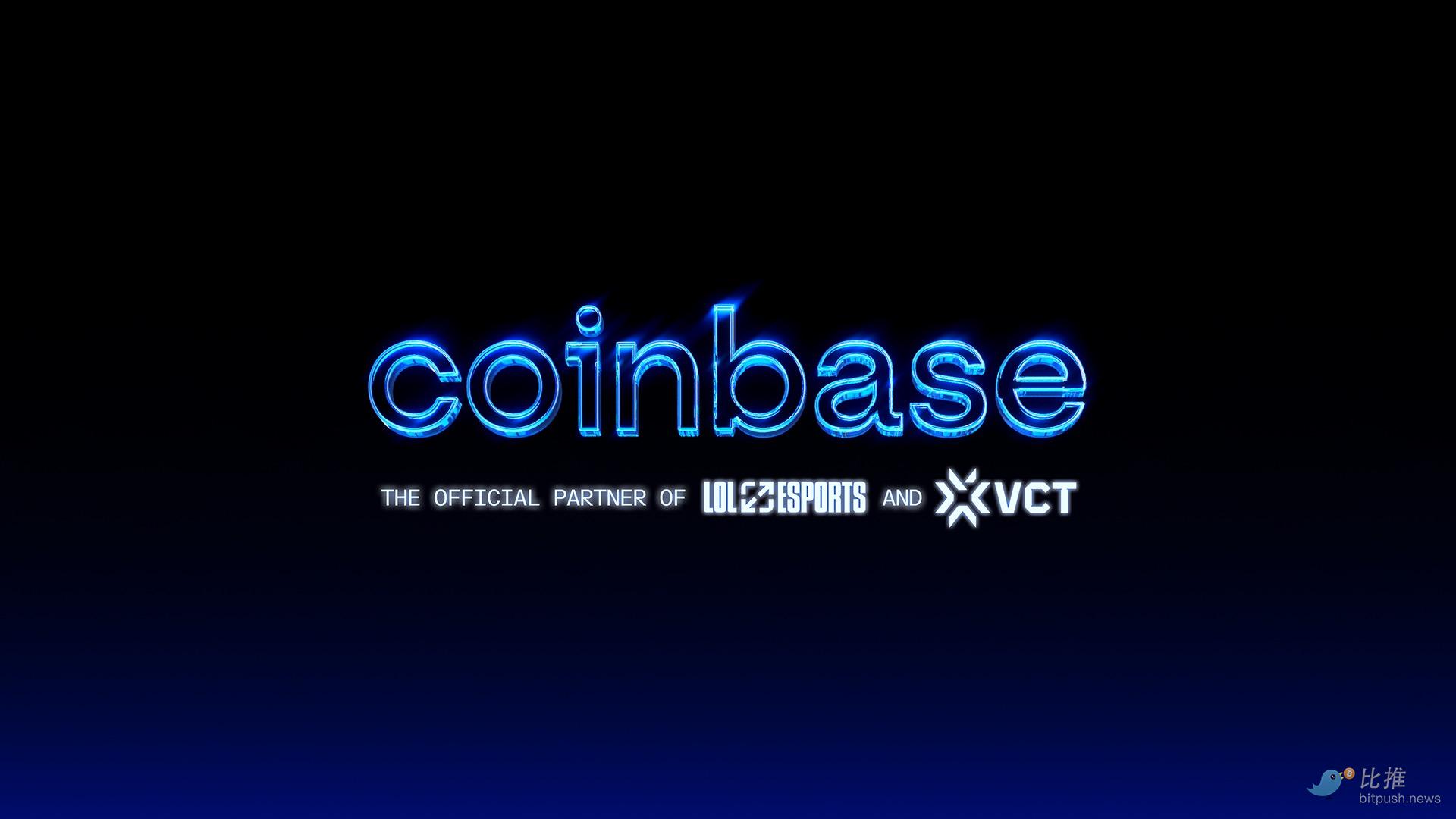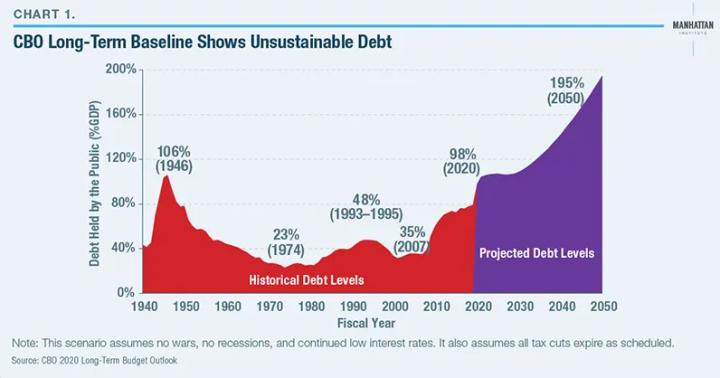In the long cycles of the crypto industry, there are always people who quietly accumulate experience during downturns, waiting for the next wave to rise.
Coinbase is such a company.
As the largest compliant exchange in the United States, Coinbase (NASDAQ: COIN) is no longer just a simple intermediary platform for matching transactions. Over the past three years, it has gradually transformed from a trading platform into a global crypto-financial infrastructure through a series of acquisitions, alliances, and institutional breakthroughs.

Today, this giant, with over $10 billion in cash reserves and a market capitalization approaching $100 billion , is extending its reach into a broader financial and cultural empire:
From Apollo to Citibank, from the Samsung ecosystem to content media, every step Coinbase takes paves the way for a trillion-dollar market.
On the eve of earnings reports: The market awaits "proof of growth".
Coinbase is about to face another "hardcore test." This Thursday (October 31, New York time), after the US stock market closes , the company will release its financial report for the third quarter of fiscal year 2025.
Analysts expect Coinbase's revenue to grow 48.3% year-over-year to $1.79 billion this quarter, with adjusted earnings per share (EPS) projected at $1.19. While this growth rate is slower than the 78.8% increase in the same period last year, it still represents strong growth.

It's worth noting that analysts have generally maintained their forecasts over the past 30 days, indicating continued market confidence in its growth path. Coinbase's stock price has already risen by about 6% in the week leading up to the earnings report, reflecting investor optimism.

Analyst ratings on TipRanks: 8 Strong Buy | 15 Buy | 8 Hold | 2 Sell
But the importance of this financial report goes beyond the numbers. It will verify a more crucial question:
—Can Coinbase's "multi-pronged growth story" be reflected in its financial statements?
Acquisition Line: Systemic Ambition Behind Forty Deals
Coinbase's history of acquisitions is almost a microcosm of the development of the crypto industry.
Over the past few years, it has completed more than 40 acquisitions. These moves are not isolated but rather part of a comprehensive ecosystem.
Strengthening the foundation: Acquisition of Xapo's institutional business in 2019
Xapo is known for its cold wallet security, and after being acquired by Coinbase, its custody capabilities have become number one in the world.
This deal marked the beginning of Coinbase's transformation from a "trade facilitator" to an "asset custodian," giving it a head start in the subsequent wave of institutionalization.
Because of this step, Coinbase Custody has now become a core partner of institutions including BlackRock and Grayscale.
Opening up the derivatives moat: Acquiring Deribit for $2.9 billion in 2025.
The cryptocurrency derivatives market is a high-profit, high-barrier-to-entry battleground.
Coinbase's acquisition of Deribit in a cash-and-stock deal not only fills a gap in its derivatives offerings but also grants it access to the global Bitcoin options market. This acquisition will mark a turning point in Coinbase's revenue structure—derivatives will become its second growth curve.
Building a content flywheel: $375 million acquisition of Echo, reviving UpOnly.
In early October of this year, Coinbase announced the acquisition of its early-stage investment platform Echo for $375 million and invested $25 million to relaunch Cobie's popular podcast "UpOnly".
This acquisition, seemingly unrelated to finance, reveals a new narrative direction for Coinbase: reshaping industry consensus through content and community, and creating a new ecosystem where "information is an asset."
In the Web3 world, perception equals traffic, and traffic equals capital. Coinbase's choice to enter the market through content means that it not only wants to be a crypto "bank," but also a crypto "Bloomberg + YouTube."
If Coinbase has been making "horizontal acquisitions" in the past few years, then its recent flurry of activity represents a "vertical breakthrough."
1. The trillion-dollar blue ocean of stablecoins and on-chain lending
On October 28, Coinbase Asset Management announced a partnership with Apollo Global Management (NYSE: APO) to jointly develop stablecoin lending strategies.
The two parties plan to launch a tokenized credit product for institutions in 2026, which will allow users to use USDC for mortgage loans or directly invest in digital credit assets.
The announcement stated that the current global market capitalization of stablecoins is approximately $300 billion, and is projected to reach $3 trillion by 2030.
Coinbase is attempting to play the role of "central bank of stablecoin capital markets" in this trend.
This is not only an innovation in financial products, but also a key step for Coinbase towards an "on-chain credit system".
At the same time, Coinbase is also advancing strategic alliances in various dimensions:
The partnership with Citibank strengthens its compliant credit and payment system, laying the foundation for future “crypto settlements”;
The partnership with Samsung will integrate USDC payments with the Base network into 75 million Galaxy devices, bringing encrypted payments into mainstream consumer scenarios.
This means that Coinbase is replicating the logic of the "Apple ecosystem"—moving from the application layer to system-level integration.
2. Regulatory Frontline: Lobbying in Washington and the Application for the National Trust Charter
That same month, the Coinbase team traveled to Washington to lobby the Senate to pass the Clarity for Payment Stablecoins Act, urging "America to vote for crypto."
Simultaneously, the company applied for a National Trust Charter from the federal OCC (Office of the Comptroller of the Currency) to shed the constraints of state-level licenses and achieve a unified national service. If approved, Coinbase will become one of the first crypto companies in the United States to possess "national bank-like" characteristics, giving it unprecedented regulatory advantages.
Base + USDC: Coinbase's Cash Engine
Coinbase's competitive advantage is shifting from transaction fees to ecosystem revenue. Two key terms: Base and USDC .
Base: The traffic engine for on-chain assets
Since its launch, Base has become the gateway for developers and users to enter the Coinbase ecosystem.
By aggregating millions of emerging tokens, opening up DEX trading functionality, and supporting direct in-app interaction, Base has formed a powerful "on-chain traffic pool".
Coinbase is no longer just facilitating transactions; it has taken control of the underlying economic power of the entire network.
USDC: A Source of Profit from Stablecoins
USDC, jointly issued by Coinbase and Circle, is its most stable source of cash flow.
With rising stablecoin interest rates and expanding institutional adoption, USDC's interest income has become a pillar of the company's profits.
A recent report by JPMorgan indicates that the Base and USDC businesses alone could bring Coinbase " billions of dollars " in long-term revenue.
Coinbase's ambitions extend beyond finance.
On October 29th, the company announced a partnership with the League of Legends World Championship to launch limited-edition Superfan skins targeting Generation Z users. The event, themed "Every Legend Has a Moment," can be participated in by Coinbase One members or new registrations.

This is a seemingly effortless yet precise marketing move: Coinbase is using esports and social culture to connect with young users on an emotional level, transforming "crypto" from a cold financial tool into a lifestyle.
Finance is a business of logic, culture is a business of emotion. Coinbase is trying to merge these two into a new narrative— the Web3 Superbrand .
VII. Conclusion: The Boundaries of the Crypto Empire
Looking back at Coinbase's expansion path, a clear pattern emerges:
The foundational layer – establishing the financial core through acquisitions of Xapo, Deribit, and others;
Ecosystem layer – expanding network effects through the Base, USDC, and Apollo alliance;
Cultural layer – Strengthening user identification through collaborations with Echo, UpOnly, and esports;
At the institutional level , compliance advantages are gained through the OCC Charter and regulatory lobbying.
Coinbase's business logic has never deviated from the core principles of its founder, Brian Armstrong:
"Make cryptocurrency a core component of the global economic system."
Today, the company's goal is no longer just to become "the world's largest exchange," but to become the JPMorgan Chase + Apple + Netflix of the crypto world : a super platform that simultaneously controls financial liquidity, technological infrastructure, and cultural narrative power.
With the third-quarter earnings report approaching, the entire market is holding its breath, waiting to see if this ambitious company can deliver results that match its ambitions.
Author: seedly.eth
Twitter: https://twitter.com/BitpushNewsCN
BitPush TG discussion group: https://t.me/BitPushCommunity
Bitpush TG subscription: https://t.me/bitpush








